Abstract
Hydroxy-l-proline-induced inhibition of elongation of Avena coleoptile segments was measured in water and in indole-3-acetic acid. This inhibition was completely reversed by l-proline.
Time-sequence experiments revealed that some time had to elapse, or some elongation had to occur, prior to the onset of hydroxyproline inhibition. The presence of sucrose supported the rate of auxin-induced elongation throughout a 24-hour period, and enhanced the effectiveness of hydroxyproline as an inhibitor of elongation.
The application of adenosine triphosphate effectively counteracted the hydroxy-proline-induced inhibition of elongation; completely in water, and partially in indole-3-acetic acid. Optimal ATP concentrations were between 0.25 and 0.75 mm. Similarly, guanine-HCL, l-glutamic acid, and l-ornithine-HCL were capable of reversing the hydroxyproline inhibition. Other compounds that were tested but which proved to be less effective are tabulated.
It is suggested that hydroxyproline may exert its inhibitory effect on the protein and/or RNA synthesis necessary for elongation of the oat coleoptile by interference with the metabolism of adenosine triphosphate or other high energy compounds.
Full text
PDF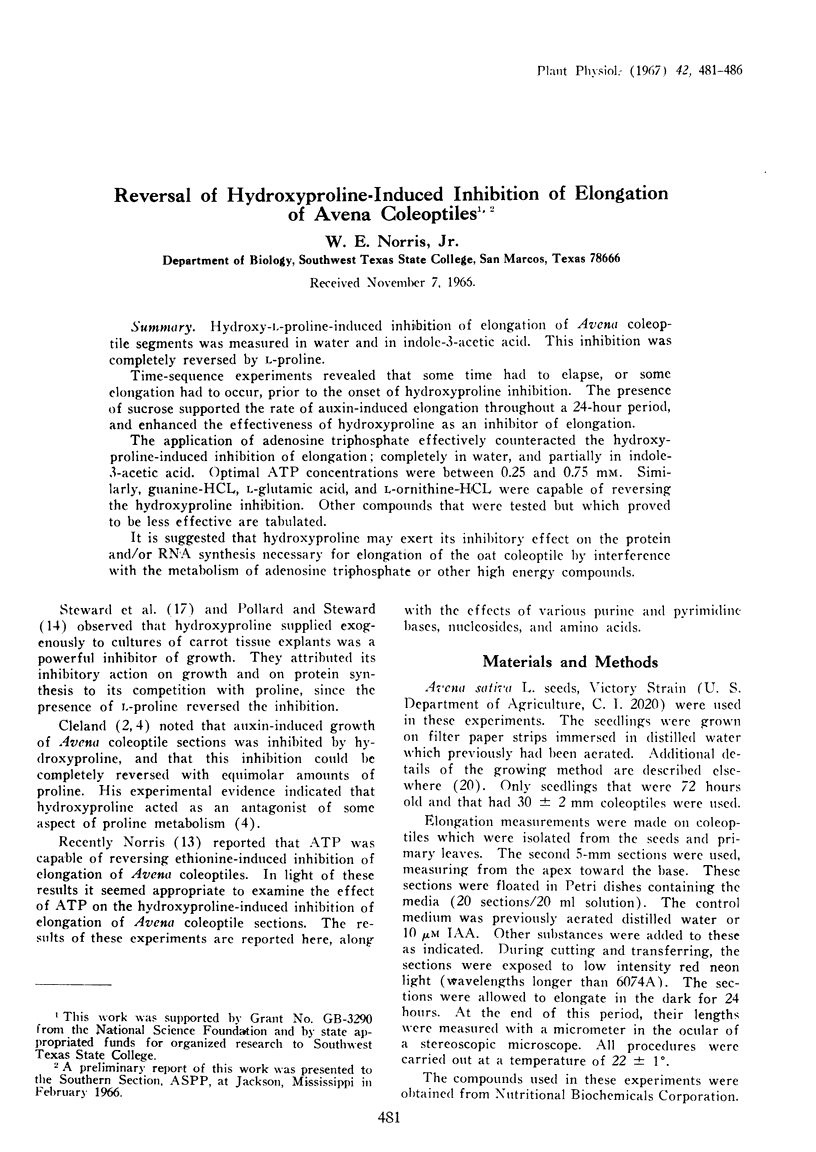
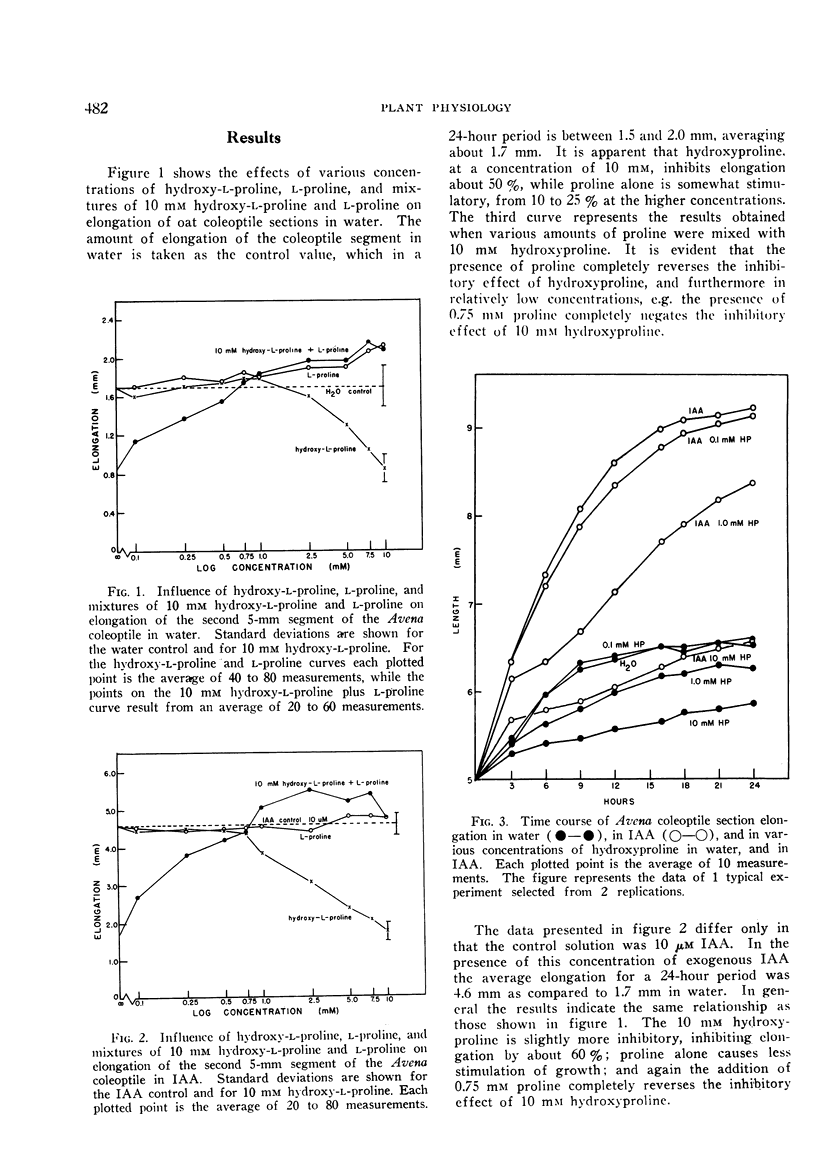
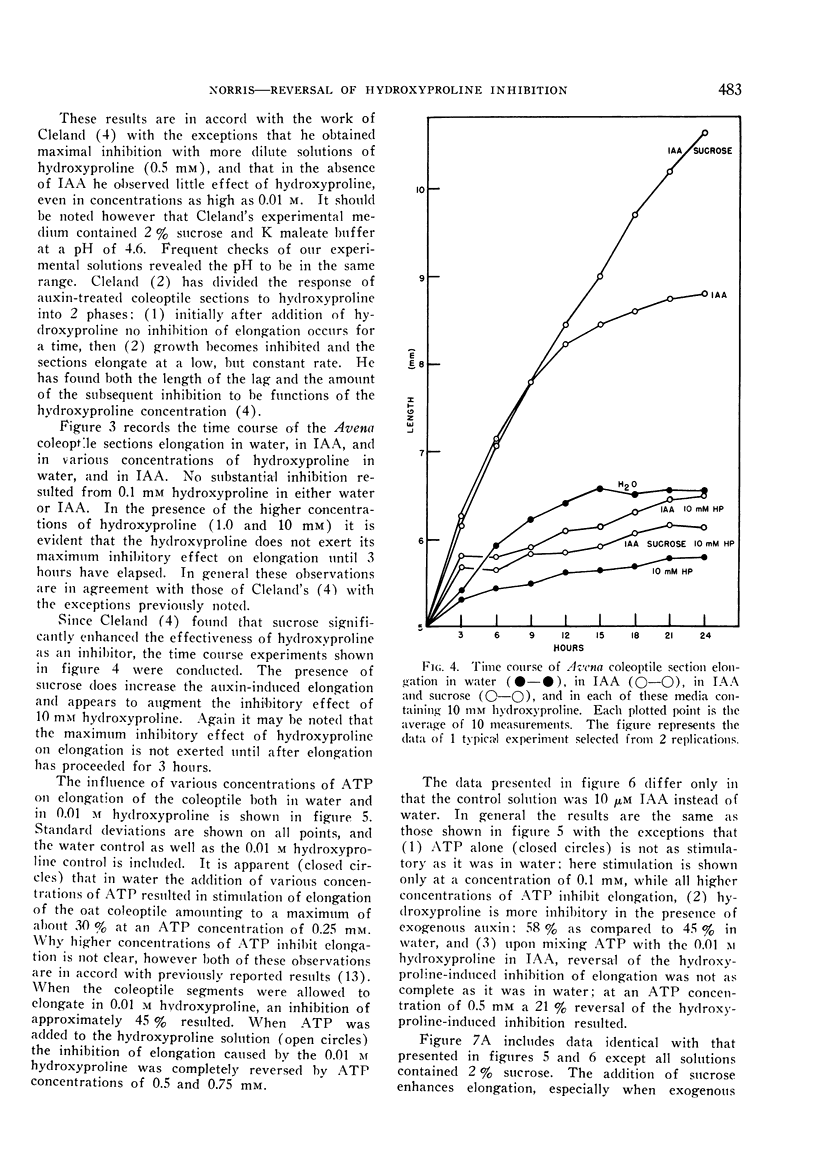
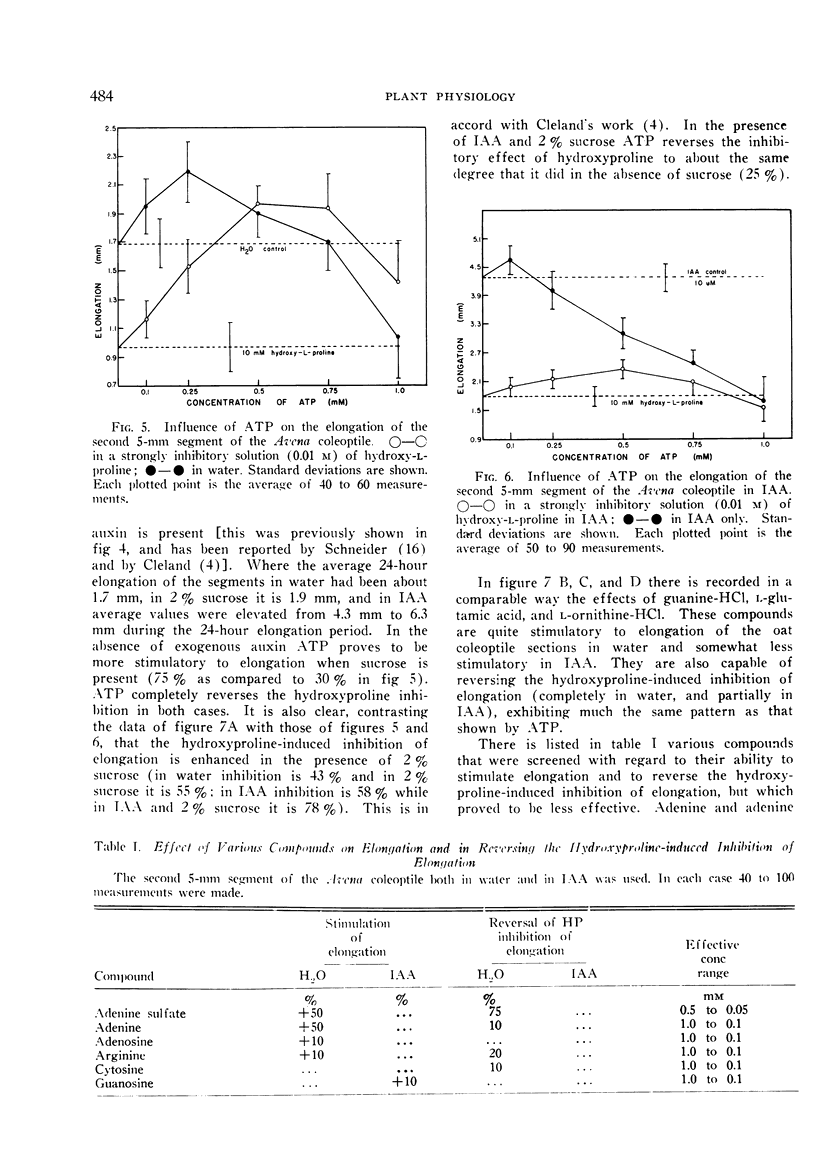
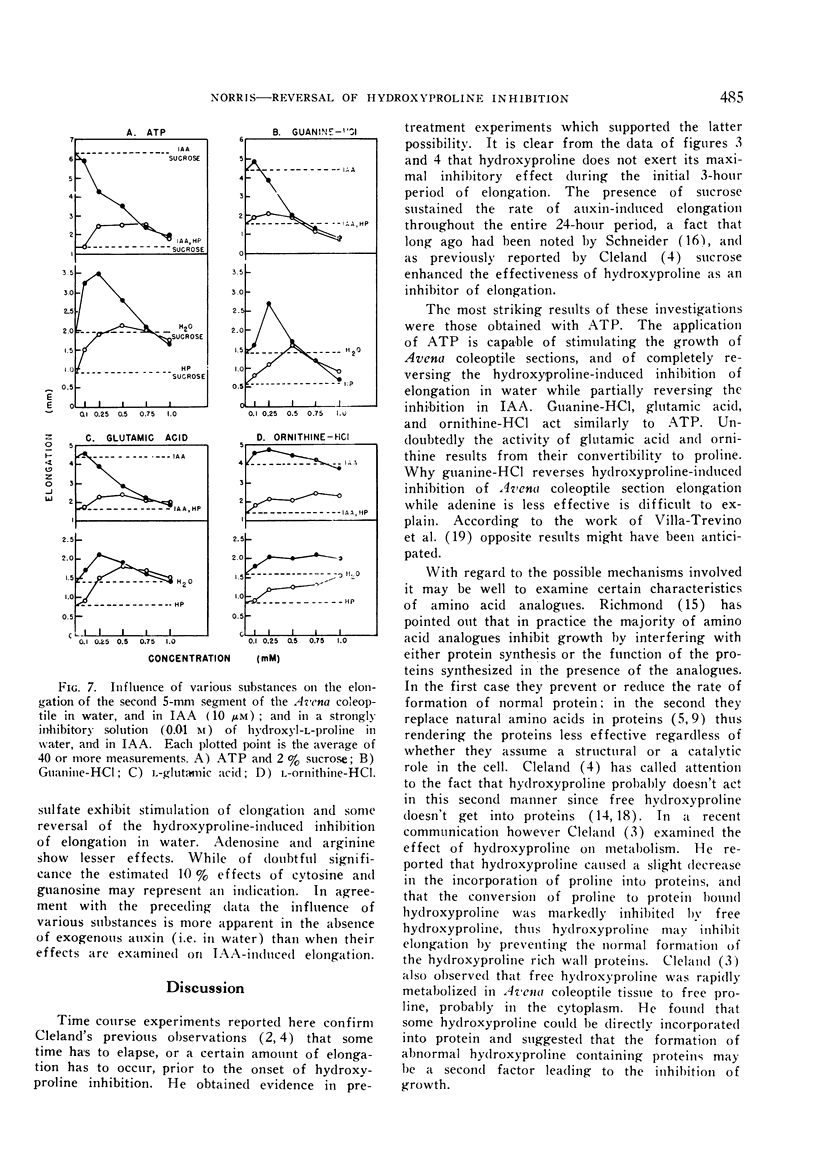
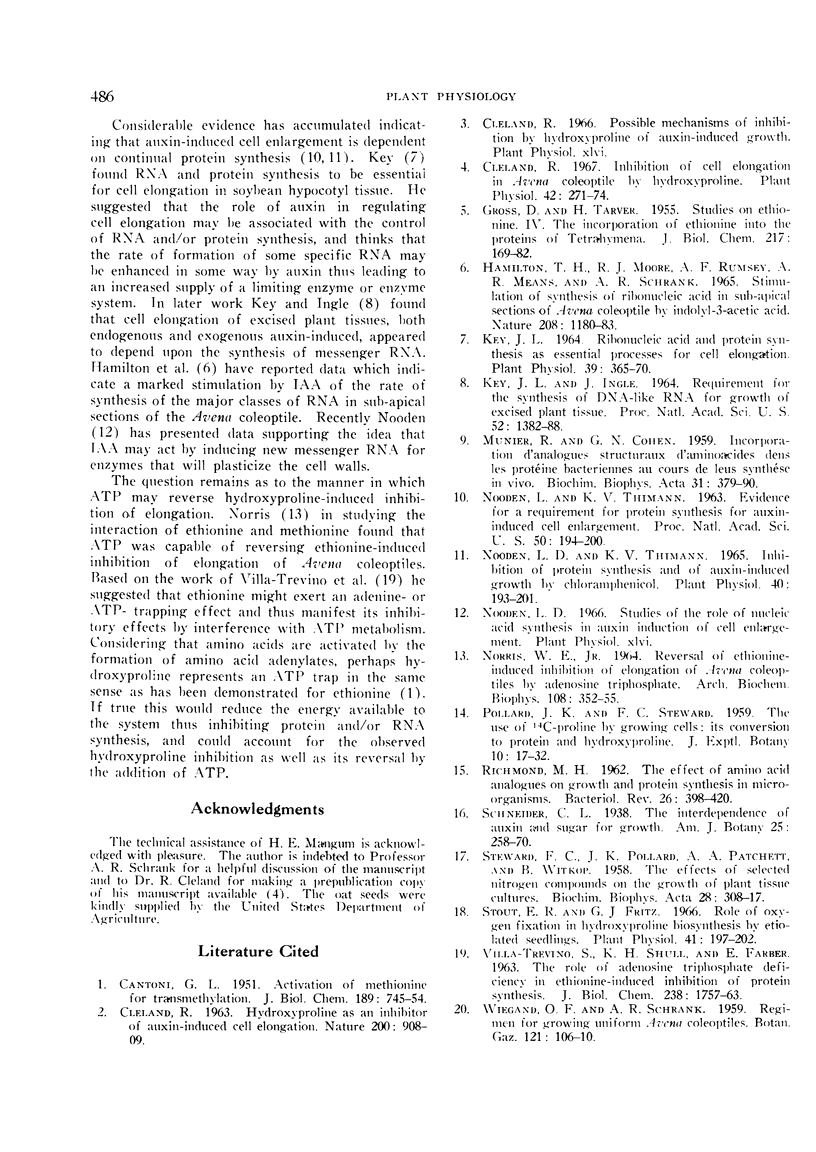
Selected References
These references are in PubMed. This may not be the complete list of references from this article.
- GROSS D., TARVER H. Studies on ethionine. IV. The incorporation of ethionine into the proteins of Tetrahymena. J Biol Chem. 1955 Nov;217(1):169–182. [PubMed] [Google Scholar]
- Key J. L., Ingle J. REQUIREMENT FOR THE SYNTHESIS OF DNA-LIKE RNA FOR GROWTH OF EXCISED PLANT TISSUE. Proc Natl Acad Sci U S A. 1964 Dec;52(6):1382–1388. doi: 10.1073/pnas.52.6.1382. [DOI] [PMC free article] [PubMed] [Google Scholar]
- Key J. L. Ribonucleic Acid and Protein Synthesis as Essential Processes for Cell Elongation. Plant Physiol. 1964 May;39(3):365–370. doi: 10.1104/pp.39.3.365. [DOI] [PMC free article] [PubMed] [Google Scholar]
- Noodén L. D., Thimann K. V. EVIDENCE FOR A REQUIREMENT FOR PROTEIN SYNTHESIS FOR AUXIN-INDUCED CELL ENLARGEMENT. Proc Natl Acad Sci U S A. 1963 Aug;50(2):194–200. doi: 10.1073/pnas.50.2.194. [DOI] [PMC free article] [PubMed] [Google Scholar]
- RICHMOND M. H. The effect of amino acid analogues on growth and protein synthesis in microorganisms. Bacteriol Rev. 1962 Dec;26:398–420. doi: 10.1128/br.26.4.398-420.1962. [DOI] [PMC free article] [PubMed] [Google Scholar]
- Stout E. R., Fritz G. J. Role of oxygen fixation in hydroxyproline biosynthesis by etiolated seedlings. Plant Physiol. 1966 Feb;41(2):197–202. doi: 10.1104/pp.41.2.197. [DOI] [PMC free article] [PubMed] [Google Scholar]
- VILLA-TREVINO S., SHULL K. H., FARBER E. The role of adenosine triphosphate deficiency in ethionine-induced inhibition of protein synthesis. J Biol Chem. 1963 May;238:1757–1763. [PubMed] [Google Scholar]


